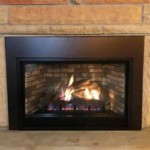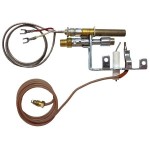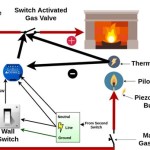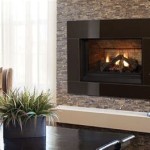Infrared Fireplace Media Mantel: A Comprehensive Overview
An infrared fireplace media mantel represents a multifaceted approach to home heating and entertainment consolidation. It combines the functionality of a traditional fireplace, incorporating infrared heating technology, with the practicality of a media console designed to house electronic devices and provide storage. This integration offers a space-saving solution that can enhance the aesthetics and comfort of a living room, family room, or bedroom.
The core principle behind an infrared fireplace lies in its heating mechanism. Unlike traditional fireplaces that rely on burning wood or gas, infrared fireplaces utilize infrared radiation to directly heat objects and individuals within a room. This method is often considered more efficient than convection heating, which warms the air, as it minimizes heat loss and delivers targeted warmth. The "mantel" component provides a decorative surround for the electric fireplace, often featuring shelves, cabinets, and a surface suitable for placing a television or other media devices.
Key Point 1: Understanding Infrared Heating Technology
The effectiveness of an infrared fireplace stems from the properties of infrared radiation. This type of electromagnetic radiation lies beyond the visible spectrum and carries energy that, when absorbed, generates heat. The infrared heating elements within the fireplace produce this radiation, which then travels through the air and warms any solid object it encounters. This includes furniture, walls, and, most importantly, people.
The advantages of infrared heating are numerous. First and foremost, it is a targeted heating method. Instead of heating the entire volume of air in a room, infrared heat focuses on warming specific areas. This translates into energy savings, as the fireplace only needs to generate enough heat to warm the occupied areas rather than the entire room. Furthermore, infrared heating does not dry out the air as significantly as traditional convection heating, which can lead to discomfort and exacerbate respiratory issues. This preserves a more comfortable and healthier indoor environment.
Another significant benefit is the rapid heating capability of infrared technology. Infrared fireplaces can quickly produce noticeable warmth, providing immediate comfort upon activation. This is in contrast to traditional heating systems that may take a considerable amount of time to reach the desired temperature. The precise control offered by infrared thermostats also contributes to efficient energy usage. Users can set specific temperature levels and the fireplace will maintain those levels without excessive energy consumption. These benefits are compounded when considering the long-term operational costs compared to gas or wood-burning alternatives.
Safety is also a prominent feature of infrared fireplaces. Because they do not involve open flames or combustible materials, the risk of fire hazards is significantly reduced. Many models incorporate safety features such as overheat protection and cool-touch exteriors, further enhancing their safety profile, especially in households with children or pets. The absence of combustion also eliminates the production of harmful byproducts such as carbon monoxide, contributing to improved indoor air quality.
The durability of infrared heating elements is another point of consideration. The lamps and heating components are designed for extended use and typically have a long lifespan, reducing the frequency of replacement and maintenance. This contributes to the overall cost-effectiveness of infrared fireplaces as a long-term heating solution.
Key Point 2: Exploring the Media Mantel Functionality
The "media mantel" aspect of these units adds another layer of functionality. It transforms the fireplace into a central entertainment hub. These mantels are specifically designed to accommodate televisions, sound systems, and other media devices. The size and configuration of the mantel vary depending on the model, but they generally provide ample space for storing media components and accessories.
Integrated cable management systems are common features in media mantel designs. These systems help to conceal and organize the various cables associated with electronic devices, maintaining a clean and uncluttered appearance. This is a significant advantage for those who prefer a minimalist aesthetic and want to avoid the tangle of wires often associated with home entertainment setups.
Beyond cable management, many media mantels incorporate shelving and cabinets for additional storage. These compartments can be used to store DVDs, Blu-rays, gaming consoles, remote controls, and other items. This built-in storage helps to keep the living space organized and free from clutter. The design of the shelves and cabinets often complements the overall style of the mantel, contributing to a cohesive and aesthetically pleasing look.
The construction materials used in the media mantel are crucial factors to consider. High-quality media mantels are typically made from durable materials such as solid wood, engineered wood, or metal. These materials ensure the structural integrity of the mantel and its ability to support the weight of a television and other devices. The finish of the mantel is also an important aesthetic consideration. Options range from traditional wood finishes to modern painted or stained surfaces. The choice of finish should complement the existing décor of the room.
The media mantel component often includes features that enhance the user experience. Some models have built-in speakers or soundbars, providing immersive audio without the need for separate audio equipment. Others may include adjustable shelves, allowing users to customize the storage space to accommodate different sized devices. The overall design of the media mantel is intended to seamlessly integrate entertainment and comfort, creating a functional and stylish focal point in the room.
Key Point 3: Design Considerations and Installation
When selecting an infrared fireplace media mantel, the design and style are important considerations. These units are available in a wide range of styles, from traditional to contemporary, ensuring that there is a model to suit virtually any décor. The style of the mantel should complement the existing furniture and architectural elements of the room. The color, texture, and overall design of the mantel should work together to create a cohesive and visually appealing space.
The size of the fireplace and mantel is also a crucial factor. The dimensions of the unit should be appropriate for the size of the room. A fireplace that is too large may overwhelm the space, while one that is too small may not provide adequate heating or visual impact. It is important to measure the available space and consider the placement of other furniture before making a purchase.
Installation of an infrared fireplace media mantel is typically straightforward. Most models are designed for easy assembly and can be installed without the need for professional assistance. However, it is essential to follow the manufacturer's instructions carefully to ensure proper installation and safe operation. Considerations for power outlet proximity and electrical load are necessary to avoid overloading existing circuits.
Some models may require minimal assembly, such as attaching the mantel to the fireplace insert. Others come fully assembled and simply need to be plugged in. When installing the unit, it is important to ensure that it is placed on a level surface and that there is adequate ventilation around the fireplace to prevent overheating. It is also important to consider the placement of the unit in relation to other objects in the room, such as curtains or furniture, to avoid creating a fire hazard.
The integration of an infrared fireplace media mantel into a smart home system is also a growing trend. Many models can be controlled remotely via smartphone apps or voice assistants, allowing users to adjust the temperature, flame settings, and other features from anywhere in the home. This level of control and convenience enhances the user experience and allows for greater energy efficiency.
The aesthetic options for the fire display are also diverse. From realistic flickering flames to customizable color schemes, users can tailor the visual appearance of the fireplace to match their preferences and the ambiance of the room. Some models even feature adjustable flame brightness and speed, providing even greater control over the visual experience.

Stylewell Ryden 60 In W Freestanding Media Mantel Infrared Electric Fireplace Insignia Blue 150915 The Home Depot

Allen Roth 56 In W American Walnut Infrared Quartz Electric Fireplace At Com

Stylewell Ryden 60 In W Freestanding Media Mantel Infrared Electric Fireplace White 150908 The Home Depot

Allen Roth 68 In W Mahogany Infrared Quartz Electric Fireplace At Com

Stylewell Ryden 60 In W Freestanding Media Mantel Infrared Electric Fireplace Insignia Blue 150915 The Home Depot

Allen Roth 64 In W Washed Oak Infrared Quartz Electric Fireplace At Com

Ryan 58 Tv Stand With Infrared Fireplace In Rustic Brown Finish Jennifer Furniture

Chimneyfree 18 Infrared Quartz Wall Mantel Electric Fireplace Com

72 New Enterprise Infrared Media Electric Fireplace W Bluetooth Speakers

Allen Roth 59 5 In W White Infrared Quartz Electric Fireplace The Fireplaces Department At Com
Related Posts








